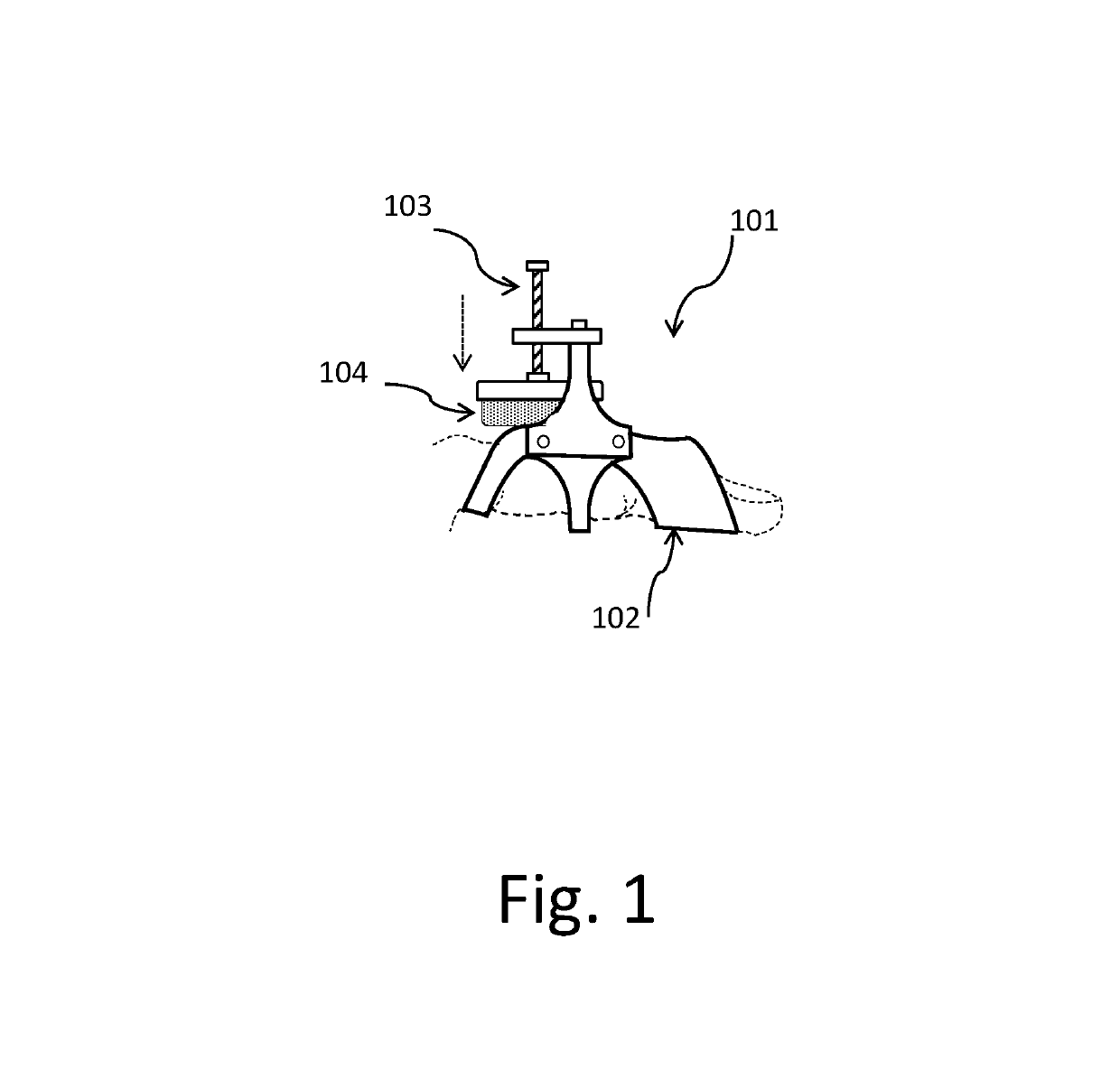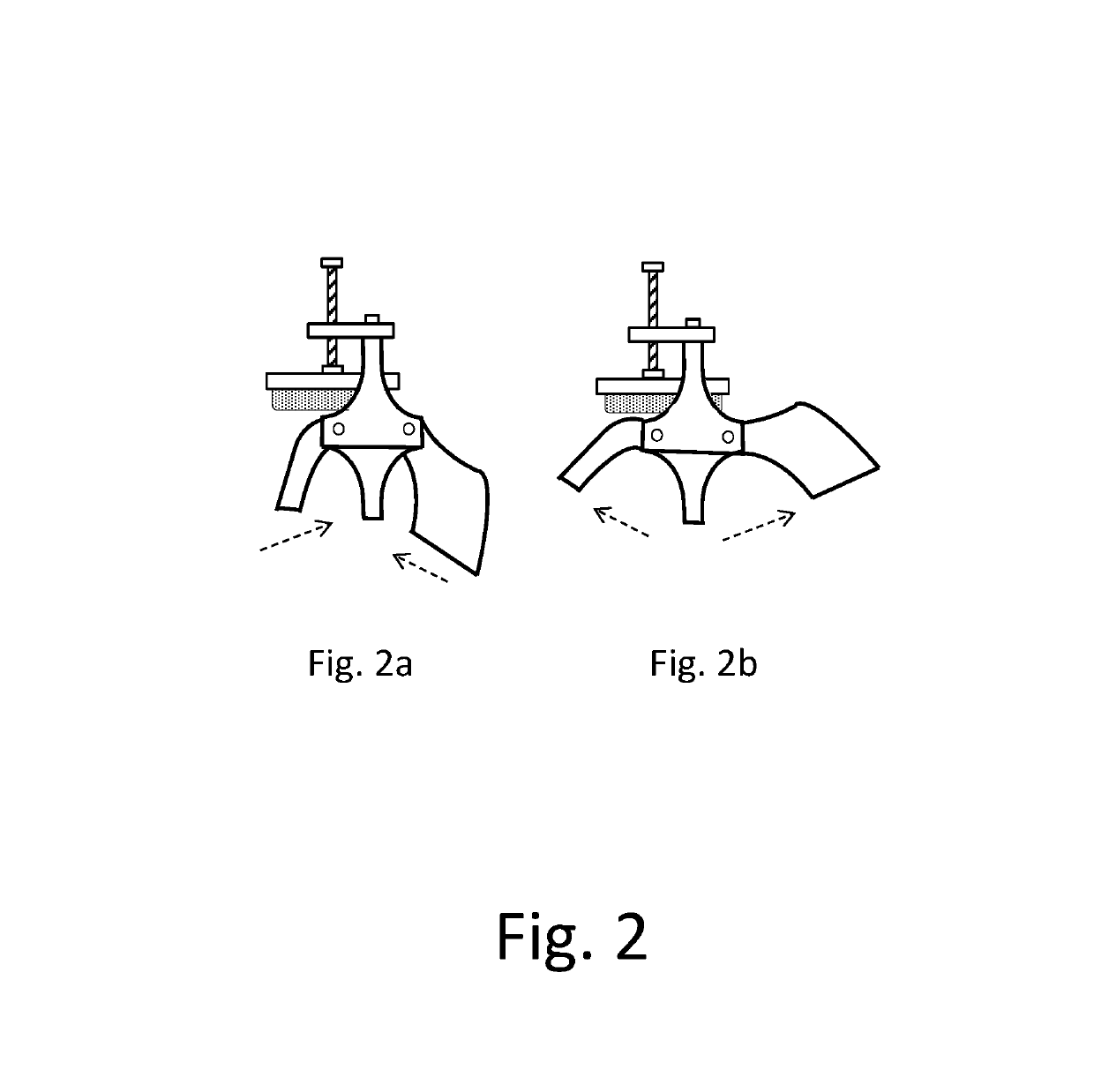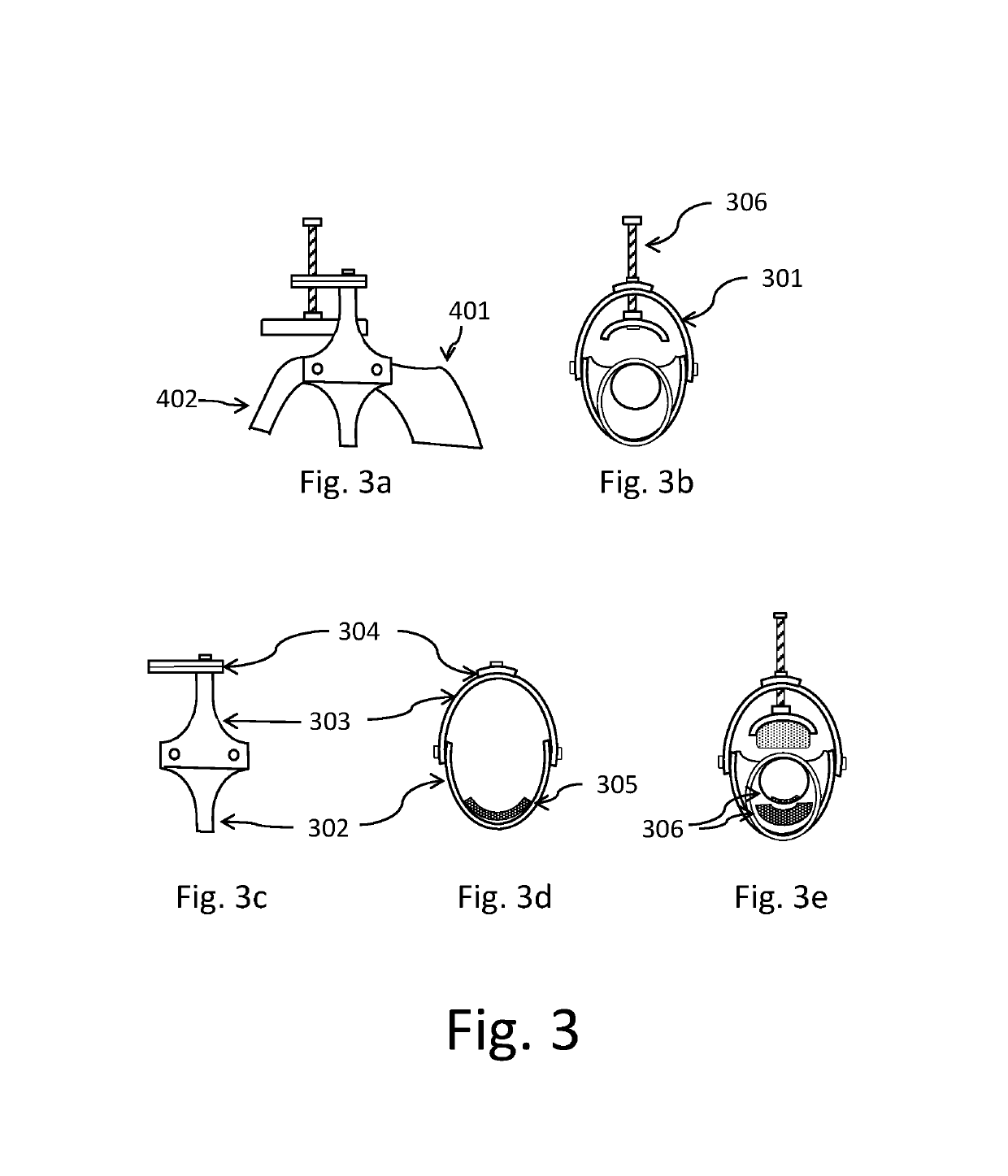Finger splint for treating boutonniere deformity
a finger splint and boutonniere technology, applied in the field of orthopaedic splints, can solve the problems of inability to completely move the finger during the course of healing, inhibit rehabilitation, and undesirable tendon contraction
- Summary
- Abstract
- Description
- Claims
- Application Information
AI Technical Summary
Benefits of technology
Problems solved by technology
Method used
Image
Examples
Embodiment Construction
[0013]In the following detailed description of the invention, reference is made to the accompanying drawings which form a part of the disclosure and which show by way of illustration, and not of limitation, specific embodiments by which the invention may be practiced. The drawings, the foregoing discussion, and the following description are exemplary and explanatory only, and are not intended to limit the scope of the invention or its application in any manner.
[0014]The Finger Splint 101 is comprised of a Dual Axis Flexible Finger Support 102 with an attached Deformity Correction Device 103. The Dual Axis Flexible Finger Support 102 includes a Distal Phalanx Support 401 and a Proximal Phalanx Support 402 that are each rotatably connected to a Frame Assembly 301. The Frame Assembly 301 is shown separately in FIGS. 3c and 3d. The Phalanx Supports (401 and 402) are attached to the Frame Assembly 301 such that they can rotate independently about two different axes, allowing full contrac...
PUM
 Login to View More
Login to View More Abstract
Description
Claims
Application Information
 Login to View More
Login to View More - R&D
- Intellectual Property
- Life Sciences
- Materials
- Tech Scout
- Unparalleled Data Quality
- Higher Quality Content
- 60% Fewer Hallucinations
Browse by: Latest US Patents, China's latest patents, Technical Efficacy Thesaurus, Application Domain, Technology Topic, Popular Technical Reports.
© 2025 PatSnap. All rights reserved.Legal|Privacy policy|Modern Slavery Act Transparency Statement|Sitemap|About US| Contact US: help@patsnap.com



